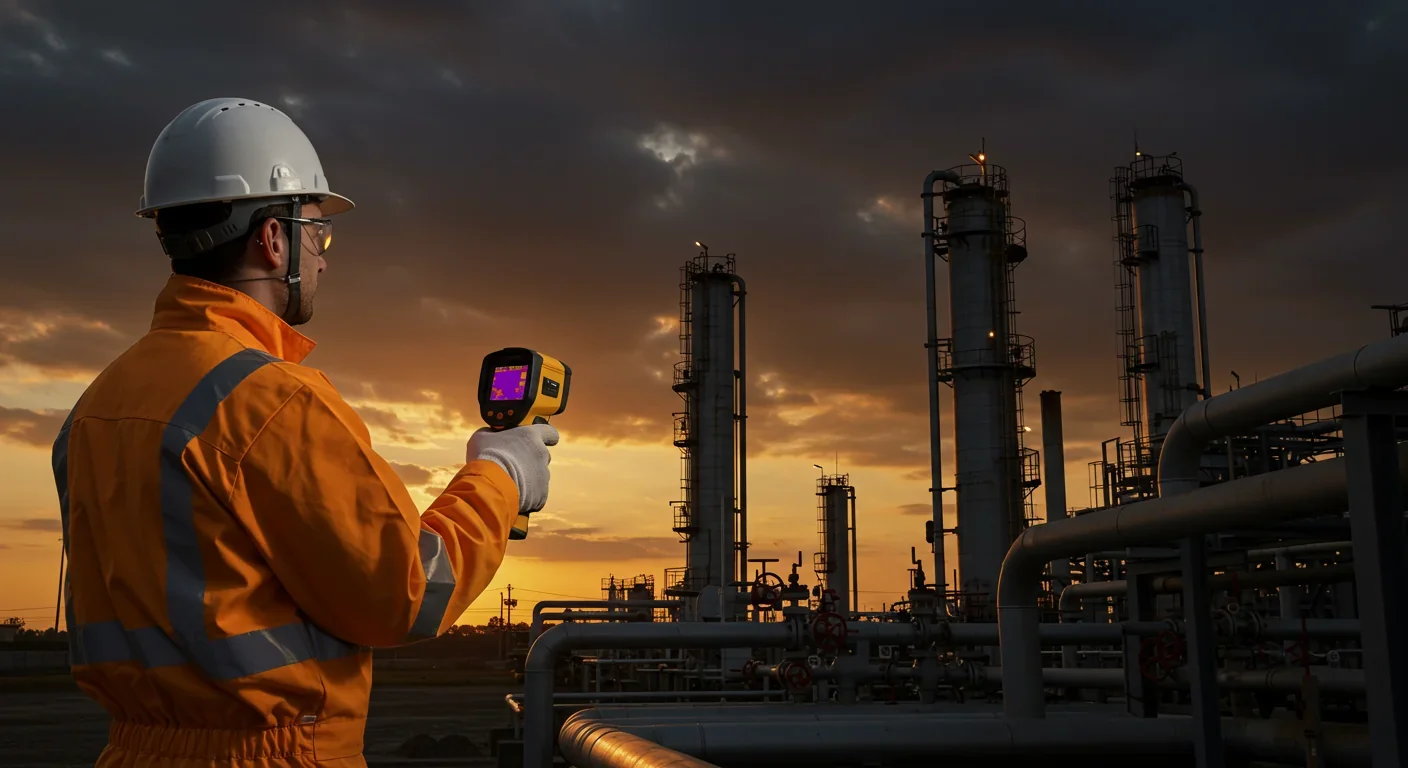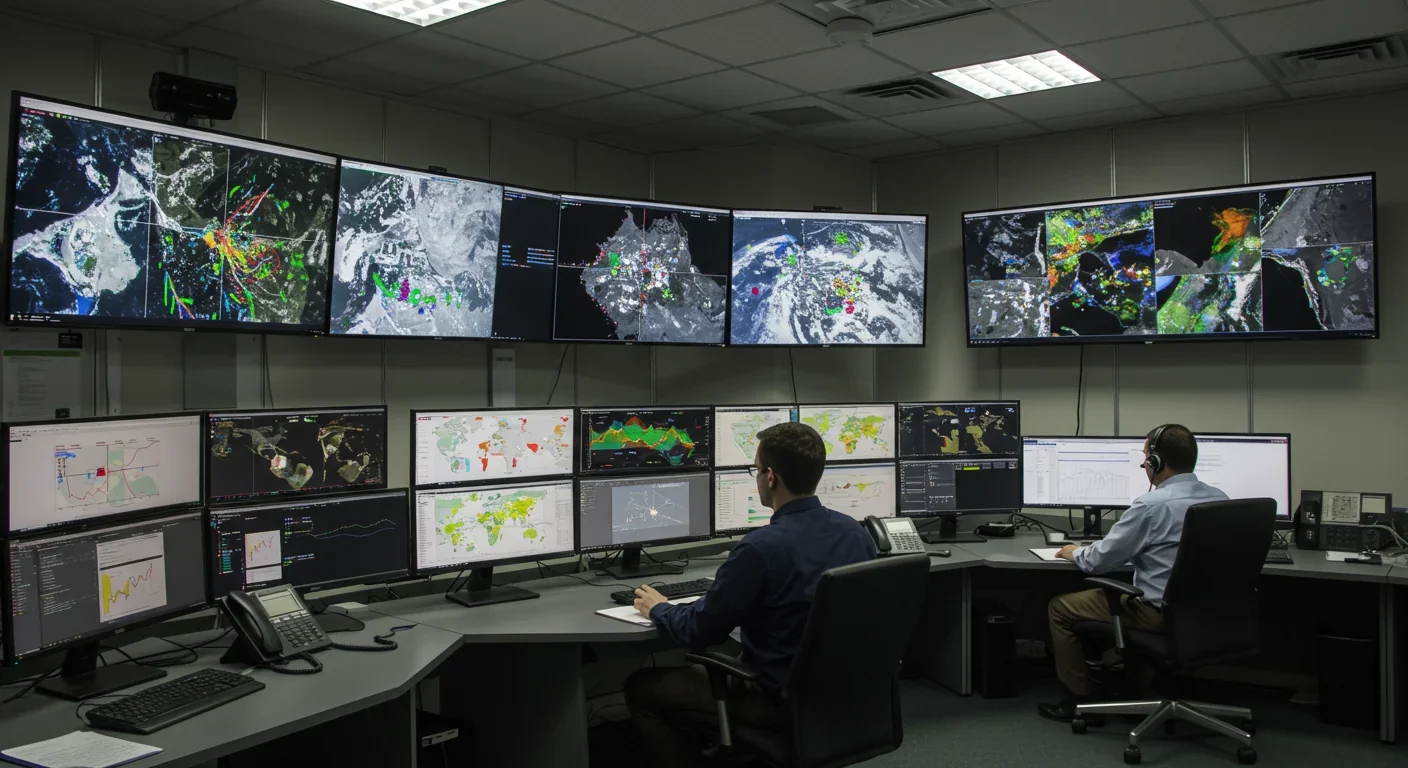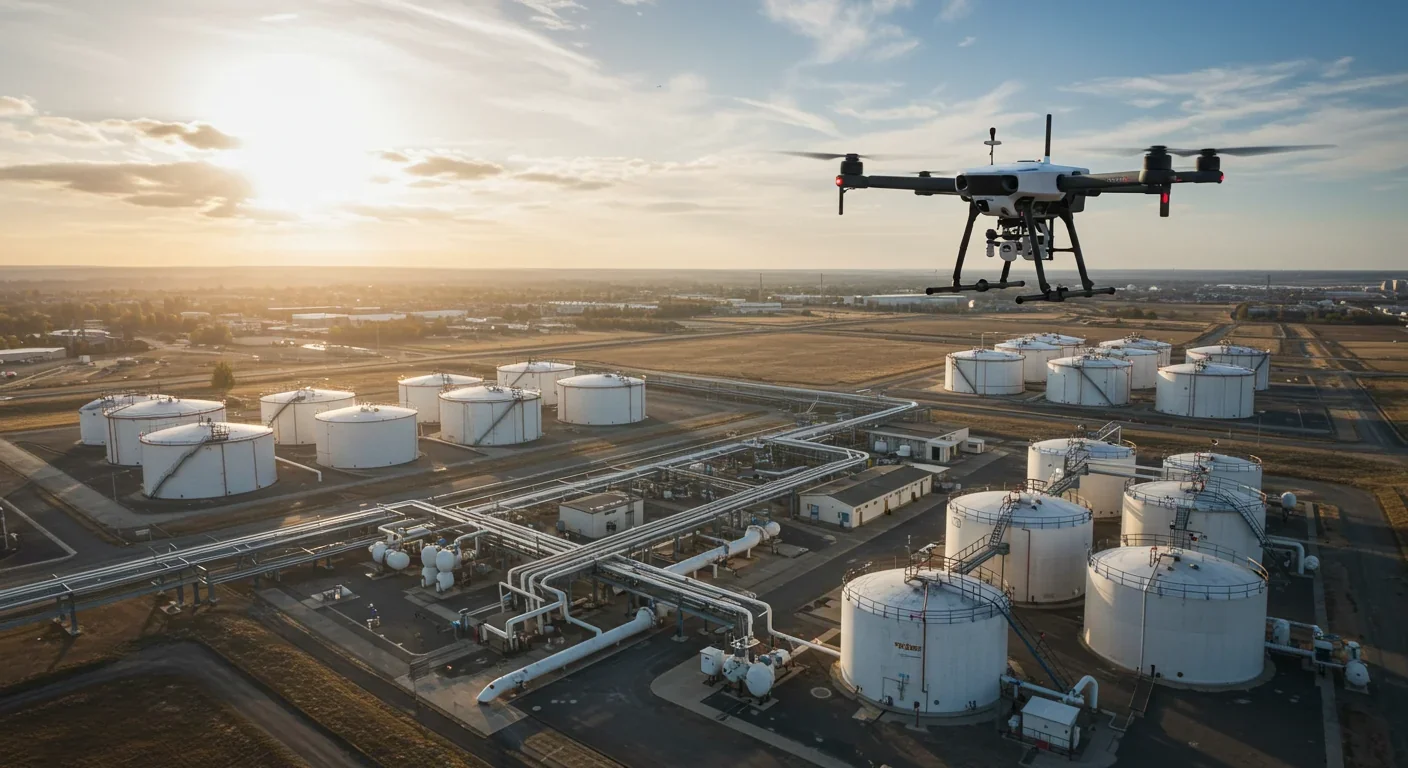Digital Pollution Tax: Can It Save Data Centers?

TL;DR: Methane traps 80 times more heat than CO₂ over 20 years, yet breaks down in just 12 years. New satellite and drone technologies can now pinpoint super-emitter leaks, making rapid repairs economically viable and offering one of climate action's fastest wins.

Within the next decade, a fleet of satellites orbiting 500 miles above Earth will spot something invisible to the naked eye but devastating to the planet: methane plumes spewing from oil wells, cow pastures, and landfills. This isn't science fiction. Satellites are already tracking these super-emitters, and what they're revealing is both alarming and hopeful. Methane, pound for pound, traps 80 times more heat than carbon dioxide over two decades. Yet unlike CO₂, which lingers for centuries, methane breaks down in roughly 12 years, making leak repairs one of the fastest levers we have to slow warming. The methane emergency isn't just a climate problem. It's a solvable one, and the clock is ticking.
Most people fixate on carbon dioxide because it's the dominant greenhouse gas by volume. But methane punches way above its weight class. Since the Industrial Revolution, methane has driven about 30% of global warming despite representing a smaller fraction of total emissions. Think of it this way: if CO₂ is a slow-burning coal fire, methane is gasoline poured on the flames.
The scale of leakage is staggering. NASA's Jet Propulsion Laboratory discovered that fewer than 0.2% of California's oil, gas, and waste facilities generated more than one-third of the state's total methane emissions between 2016 and 2017. These "super-emitters" are the low-hanging fruit of climate action. Fix a handful of sites, and you eliminate massive amounts of warming potential.
What makes methane particularly insidious is its health impact. New research reveals hidden risks tied to methane exposure, especially near oil and gas operations. Communities living downwind of leak sites face respiratory problems and other illnesses that compound the climate crisis with immediate human suffering.
Methane leakage isn't new. For decades, energy companies treated natural gas losses as a cost of doing business, an acceptable inefficiency in extracting and transporting fuel. Agriculture operated under similar assumptions. Cattle burp methane as a byproduct of digestion, and until recently, nobody seriously imagined capturing those emissions. Landfills slowly released decomposition gases because monitoring and collection systems were expensive and rarely mandated.
This laissez-faire approach made economic sense when fossil fuels were cheap and climate science was contested. But three shifts changed everything. First, climate models grew sophisticated enough to pinpoint methane's outsize contribution to warming. Second, detection technology improved dramatically, from clunky ground sensors to high-resolution satellites that can spot leaks from space. Third, the economics flipped. Natural gas that leaks represents lost revenue, and carbon pricing mechanisms in Europe and beyond started making emissions financially painful.
Historical parallels offer both caution and hope. The ozone hole crisis of the 1980s showed that rapid global action could reverse atmospheric damage when alternatives existed. Acid rain regulations proved that industry could innovate when regulations had teeth. Methane mitigation blends both lessons: the technology exists, but deployment requires political will and economic incentives strong enough to overcome inertia.
Walk onto a modern oil field, and you might see something that looks like a miniature helicopter hovering near wellheads. Drone-based methane detection systems now patrol facilities, creating 3D maps of emissions invisible to human operators. Companies like Measur have developed specialized sensors that can pinpoint leaks within meters, guiding repair crews directly to problem spots.
But the real game-changer orbits overhead. California recently contracted with satellite provider Carbon Mapper to access data from the Tanager-1 satellite, which scans facilities for methane plumes as part of the state's SB 1383 compliance program. The satellite revisits sites regularly, creating an audit trail that makes hiding emissions nearly impossible.
Europe and Asia are racing to deploy similar systems. The UN's Methane Alert and Response System (MARS) coordinates international satellite observations, notifying governments and companies when super-emitters are detected. This global surveillance network transforms methane from an invisible problem into a quantified, traceable target.
On-site innovation complements orbital monitoring. TrelliSense deploys laser-based continuous monitoring systems that alert operators to leaks in real time, eliminating the lag between detection and repair. Meanwhile, researchers in Sweden are testing new sensor technologies that promise even greater sensitivity at lower cost.
The technological ecosystem now covers every scale: satellites for regional mapping, aircraft and drones for facility-level surveys, and ground sensors for continuous monitoring. Each layer fills gaps the others miss, creating a comprehensive detection net that wasn't imaginable a decade ago.

Oil and gas infrastructure dominates methane emissions in many regions, but the full picture is more complex. Agriculture, particularly cattle ranching, generates massive quantities of methane through enteric fermentation. A single cow can produce 200 liters of methane daily, and with over a billion cattle worldwide, those burps add up.
Landfills represent another major source. Organic waste decomposing without oxygen creates methane that either leaks through soil cover or escapes collection systems. Improved landfill management, including better gas capture and composting alternatives, can dramatically reduce these emissions.
The fossil fuel supply chain leaks at multiple points: during extraction, processing, transmission through pipelines, storage, and distribution to end users. Each stage presents opportunities for escapes that operators historically treated as unavoidable. Companies like TotalEnergies have developed technologies specifically targeting these multi-point failures.
What's surprising is how concentrated the problem is. That NASA study finding that 0.2% of facilities generate a third of emissions isn't unique to California. Similar patterns emerge globally, suggesting that strategic targeting of super-emitters could yield disproportionate climate benefits without requiring industry-wide overhauls.
Here's where methane mitigation gets interesting: fixing leaks often pays for itself. Natural gas companies lose revenue when product escapes. At current prices, the lost gas from a single super-emitter can exceed repair costs within months. Detection technology that once seemed expensive now looks like cheap insurance against wasted inventory.
Carbon markets amplify these incentives. Companies can generate credits by documenting emission reductions, creating secondary revenue streams. The Integrity Council for the Voluntary Carbon Market has approved methodologies specifically for methane reduction projects, establishing standardized measurement and verification protocols.
Regulatory pressure adds another financial dimension. California's methane regulations and similar rules in other jurisdictions impose fines for excess emissions, making non-compliance expensive. Forward-thinking companies now treat leak prevention as risk management rather than an optional environmental gesture.
The technology cost curve continues dropping. Early satellite monitoring required dedicated government missions costing hundreds of millions. Today, commercial providers offer monitoring as a service, with subscription models that make continuous surveillance accessible to medium-sized operators. Ground sensor networks have followed similar trajectories, with prices falling as volume production scales.
This economic alignment matters because climate solutions that depend on altruism rarely scale. Methane mitigation increasingly makes business sense independent of environmental motivations, which is exactly the kind of alignment that drives systemic change.
Despite favorable economics and available technology, methane continues escaping in troubling quantities. Why? Start with legacy infrastructure. Pipeline networks built decades ago weren't designed with leak prevention as a priority. Retrofitting thousands of miles of aging pipe is technically feasible but logistically daunting and capital-intensive.
Regulatory fragmentation complicates enforcement. Different jurisdictions implement wildly varying standards, creating a patchwork where companies face strong incentives to reduce emissions in some regions and little pressure elsewhere. This geographic arbitrage delays global action.
Agricultural emissions present unique challenges. You can cap an oil well or repair a pipeline, but fundamentally changing bovine digestion requires innovations in feed additives that remain experimental or expensive. Farmers operate on thin margins and resist costly interventions that don't directly boost productivity.
Data access remains contentious. While satellites can detect major leaks, companies often resist disclosing detailed emissions data, citing competitive concerns. This information asymmetry makes independent verification difficult and slows the development of best practices that could benefit the entire industry.

Different cultures and political systems are tackling methane with distinct strategies, offering a natural experiment in what works. The European Union leads on regulation, implementing comprehensive monitoring requirements and steep penalties. Early results suggest compliance improves rapidly when enforcement is credible and consistent.
New Zealand faces a unique challenge given its economy's dependence on agriculture. The country is experimenting with genetic selection for low-methane cattle and feed supplements that alter rumen fermentation. Success here could provide a template for other agricultural economies.
The United States operates through a mix of federal standards and state-level innovation. Companies like Devon Energy have embraced voluntary reduction programs, finding that proactive compliance builds reputational value and anticipates likely future regulations. Meanwhile, California pushes boundaries with satellite-driven enforcement that other states watch closely.
Developing nations face a different calculus. Energy infrastructure in countries rapidly expanding fossil fuel use often incorporates leak prevention from the start, leapfrogging older, leakier designs. This isn't altruism but pragmatism: building right the first time costs less than retrofitting.
International cooperation remains patchy. The UN's MARS system demonstrates what's possible when countries share data, but geopolitical tensions and national sovereignty concerns limit information flow. Climate diplomacy increasingly recognizes that methane reductions offer rare common ground because benefits accrue quickly and globally.
What does a world with controlled methane look like? Start with energy systems where continuous monitoring becomes standard practice, much like safety equipment that's mandatory rather than optional. Smart infrastructure detects and alerts before minor leaks become major emissions events.
Agriculture evolves through biotechnology and management practices that reduce enteric fermentation. This doesn't mean abandoning livestock but optimizing diets and breeds for lower emissions per unit of protein produced. Precision agriculture tools will measure individual animal contributions, allowing farmers to make data-driven breeding decisions.
Waste management shifts toward systems that capture methane as a resource rather than managing it as a pollutant. Anaerobic digesters convert organic waste into biogas for energy generation, closing loops that currently leak massive quantities.
The workforce adapts too. Leak detection specialist becomes a recognized profession, requiring skills in drone operation, data analysis, and sensor deployment. Engineers incorporate methane monitoring into facility design from the outset rather than retrofitting. Environmental consultants advise companies on optimizing measurement, reporting, and verification systems that satisfy regulatory requirements and carbon market standards.
For individuals, the connection between daily choices and methane emissions grows clearer. Food waste that ends up in landfills generates methane, while composting prevents it. Supporting policies that mandate leak detection and repair accelerates systemic change that individual actions alone can't achieve.
Methane reduction offers something rare in climate policy: a win that's fast, measurable, and economically viable. The warming avoided by plugging leaks over the next decade will create breathing room for longer-term transitions away from fossil fuels. Every ton of methane kept from the atmosphere is heat our grandchildren won't have to deal with.
The technology works. The economics increasingly favor action. What's missing is the sense of urgency that methane's climate impact deserves. Even when high-profile satellite missions face setbacks, the proliferation of alternative monitoring systems ensures that detection capabilities continue expanding.
Success requires coordination across sectors that rarely collaborate. Energy companies, agricultural producers, waste managers, technology developers, regulators, and investors all hold pieces of the solution. The challenge is moving from piecemeal efforts to systematic implementation at the speed and scale the climate demands.
The methane emergency is urgent, but unlike many environmental crises, the solutions are tangible and deployable today. We don't need to wait for miraculous breakthroughs. We need to apply what we already know, enforce standards that already exist, and scale technologies that already work. The leaks are mappable, fixable, and profitable to address. What we do with this knowledge over the next five years will determine whether we seize one of climate action's clearest opportunities or let it literally evaporate into the atmosphere.

Recent breakthroughs in fusion technology—including 351,000-gauss magnetic fields, AI-driven plasma diagnostics, and net energy gain at the National Ignition Facility—are transforming fusion propulsion from science fiction to engineering frontier. Scientists now have a realistic pathway to accelerate spacecraft to 10% of light speed, enabling a 43-year journey to Alpha Centauri. While challenges remain in miniaturization, neutron management, and sustained operation, the physics barriers have ...

Epigenetic clocks measure DNA methylation patterns to calculate biological age, which predicts disease risk up to 30 years before symptoms appear. Landmark studies show that accelerated epigenetic aging forecasts cardiovascular disease, diabetes, and neurodegeneration with remarkable accuracy. Lifestyle interventions—Mediterranean diet, structured exercise, quality sleep, stress management—can measurably reverse biological aging, reducing epigenetic age by 1-2 years within months. Commercial ...

Data centers consumed 415 terawatt-hours of electricity in 2024 and will nearly double that by 2030, driven by AI's insatiable energy appetite. Despite tech giants' renewable pledges, actual emissions are up to 662% higher than reported due to accounting loopholes. A digital pollution tax—similar to Europe's carbon border tariff—could finally force the industry to invest in efficiency technologies like liquid cooling, waste heat recovery, and time-matched renewable power, transforming volunta...

Humans are hardwired to see invisible agents—gods, ghosts, conspiracies—thanks to the Hyperactive Agency Detection Device (HADD), an evolutionary survival mechanism that favored false alarms over fatal misses. This cognitive bias, rooted in brain regions like the temporoparietal junction and medial prefrontal cortex, generates religious beliefs, animistic worldviews, and conspiracy theories across all cultures. Understanding HADD doesn't eliminate belief, but it helps us recognize when our pa...

The bombardier beetle has perfected a chemical defense system that human engineers are still trying to replicate: a two-chamber micro-combustion engine that mixes hydroquinone and hydrogen peroxide to create explosive 100°C sprays at up to 500 pulses per second, aimed with 270-degree precision. This tiny insect's biochemical marvel is inspiring revolutionary technologies in aerospace propulsion, pharmaceutical delivery, and fire suppression. By 2030, beetle-inspired systems could position sat...

The U.S. faces a catastrophic care worker shortage driven by poverty-level wages, overwhelming burnout, and systemic undervaluation. With 99% of nursing homes hiring and 9.7 million openings projected by 2034, the crisis threatens patient safety, family stability, and economic productivity. Evidence-based solutions—wage reforms, streamlined training, technology integration, and policy enforcement—exist and work, but require sustained political will and cultural recognition that caregiving is ...

Every major AI model was trained on copyrighted text scraped without permission, triggering billion-dollar lawsuits and forcing a reckoning between innovation and creator rights. The future depends on finding balance between transformative AI development and fair compensation for the people whose work fuels it.